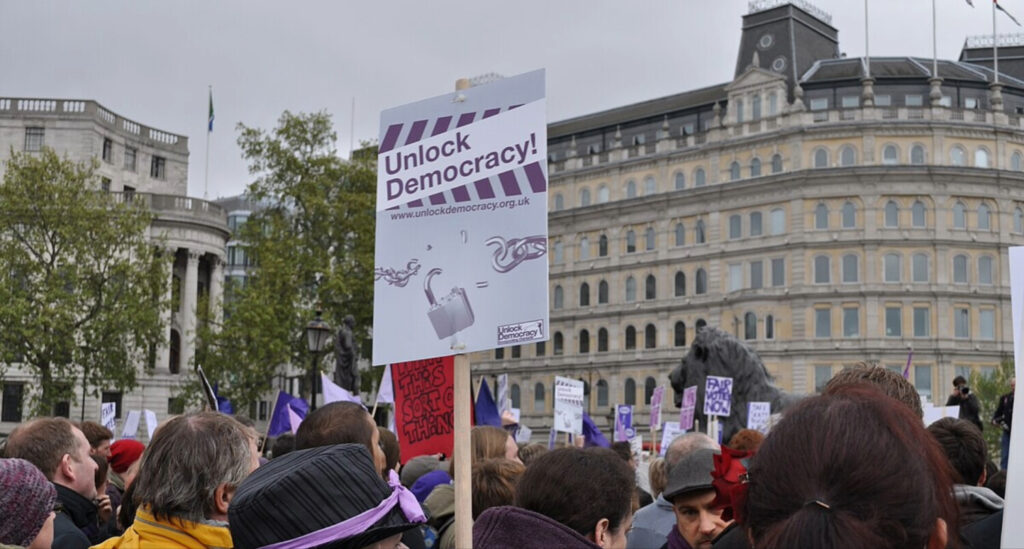The Impact of NATO Enlargement to Eastern Europe on US-Russia Relations
Amid decades of NATO’s eastward expansionism and the heightened tensions between Moscow and Washington, what are the solutions to this geopolitical standoff?
After the Cold War, the Soviet Union dissolved, the Warsaw Pact disintegrated, and a unipolar world order led by the United States emerged. NATO, however, remained intact and began enlarging eastward. Since 1991, this expansion has strained Russia’s relations with the West, especially the US. NATO enlargement is significant not only for Russia but also for the global balance of power, raising questions about security, cooperation, and whether the US broke promises to Moscow.
This essay examines how NATO enlargement to Eastern Europe has affected US-Russia relations. First, it analyses NATO’s eastward expansion from the American perspective, stressing US liberal identity, superpower responsibilities, and debates over broken promises. Second, it evaluates the Russian perspective, particularly its realist security concerns and the Ukraine crisis. Finally, it offers recommendations on preventing NATO enlargement from escalating into an international security issue.
NATO Enlargement from the American Perspective
United States as Superpower
Article 10 of the Washington Treaty allows NATO enlargement, so there was no legal barrier to Eastern European states joining. Initially, the US lacked a clear enlargement policy since the Soviet threat had vanished. As Colin Powell noted, “I am running out of demons. I am running out of enemies” (Waltz, 2000).
However, as the sole superpower, the US assumed new responsibilities. Eastern European states, fearful of Russia’s instability, sought US protection. For example, at a Warsaw conference in 1990, a Polish general requested US forces on Polish soil (Marten, 2017). Alliances also served as insurance for weaker states, providing economic and political advantages (Thalakada, 2012). Thus, NATO expansion reflected America’s superpower role and influence in shaping the post-Cold War order.
Liberal Identity of the United States
America’s liberal identity also shaped its approach. NATO enlargement rewarded democratic reforms and reflected the Clinton administration’s desire to promote democracy globally.
Democratic peace theory suggests democracies rarely fight each other, reinforcing the idea that NATO expansion could consolidate peace.
Clinton and later leaders viewed NATO enlargement as a way to foster democratic governance, stability, and liberal market economies in post-communist states (Marten, 2017). Political stability, crucial for market economies, was supported by NATO security guarantees (Pease, 2019). Enlargement also encouraged economic interdependence, reducing the likelihood of conflict. From this perspective, NATO enlargement was not aggressive but part of America’s liberal mission to promote peace and prosperity.
The Alleged Broken Promise
Russia has long claimed the West promised not to expand NATO eastward. Putin often cites this as evidence of betrayal, particularly regarding Crimea (Rühle, 2014). However, no formal commitment was made. Even Gorbachev later admitted the issue was never discussed in 1990, stating that “the topic of NATO expansion was not discussed at all” (Kramer, 2017). Thus, while Russia perceives NATO expansion as a broken promise, there is no legal or documented basis for this claim.
NATO Enlargement from the Russian Perspective
Although NATO never officially named the USSR as its enemy, its inclusion of West Germany in 1955 was provocative enough to trigger the Warsaw Pact. For Russia, every enlargement eastward—especially toward its borders—has been perceived as threatening. From Moscow’s view, NATO’s intentions matter less than its capabilities. Primakov argued that political intentions change, but capabilities remain constant (Averre, 1998). Concerns about nuclear deployments in new NATO states heightened Russian insecurity, despite US assurances under the “three no’s” policy (Pushkov, 1997).
Many observers, including George Kennan, warned that NATO enlargement was “the most fateful error of American policy in the entire post-Cold War era” (Rühle, 2014). Expansion without considering Russia’s security interests risked alienation, mistrust, and renewed Cold War dynamics.
The Ukraine crisis illustrates this. According to Mearsheimer (2022), US policy ignored Russia’s “bright red lines” by encouraging Ukraine’s NATO aspirations. Putin’s goal was not to annex Ukraine but to prevent it from becoming a Western base against Russia. Russia initially sought diplomatic assurances against NATO expansion but was ignored. The invasion shows how enlargement exacerbated tensions and validated Russia’s realist security concerns.
Realists argue that survival is states’ primary goal, and from this perspective, NATO’s persistence and expansion—even after the Soviet collapse—seem threatening. Russian leaders highlight that NATO’s moves occur “on the doorstep of our house” (Mearsheimer, 2022). Beyond security, enlargement also threatens Russia economically, as Central and Eastern European states shift their arms purchases toward NATO allies, reducing Russia’s defence markets (Hürsoy, 2002).
Solutions
This essay has examined NATO enlargement from US and Russian perspectives. For the US, enlargement reflected both its superpower role and liberal mission to promote democracy, stability, and markets. Allegations of a broken promise remain unsubstantiated. For Russia, enlargement represents an existential security threat, validating realist concerns and contributing to the Ukraine crisis. To prevent NATO enlargement from escalating tensions, scholars have proposed several solutions:
Including Russia in NATO: Some suggested eventual Russian membership to prevent isolation. Putin himself proposed a “French model” of political membership without military commitments (Rühle, 2014). However, doubts about Russia’s democratic credentials and its portrayal of NATO as hostile rendered this unfeasible.
Reforming NATO’s name and function: Others argue NATO should redefine its role beyond Cold War logic. As Lebed (1996) noted, Russians still perceive NATO as an imperialist threat. By rebranding and shifting focus to peacekeeping, counterterrorism, or arms control, NATO could adapt to modern security challenges while easing Russian fears.
Of the proposals, redefining NATO’s mission and image seems most viable. The Cold War has ended, yet NATO’s persistence fuels mistrust. By restructuring to address new threats and presenting itself as less adversarial, NATO enlargement could be reframed as an opportunity for cooperative security rather than a zero-sum threat.
Bibliography
- Averre, D. (1998). NATO expansion and Russian national interests. European Security, 7(1), 10-54. Taylor & Francis Online. 10.1080/09662839808407348
- Hürsoy, S. (2002). NATO’s PROBLEMATIC ENLARGEMENT TOWARD CENTRAL AND EASTERN EUROPEAN COUNTRIES. Ege Academic Review, 2(2), 65-70. DergiPark. https://dergipark.org.tr/tr/download/article-file/556794
- Kramer, M. (2017). NATO Enlargement— Was There a Promise? International Security, 42(1), 186-189. Project MUSE. https://muse.jhu.edu/article/667395/pdf
- Lebed, A. (1996, November 20). No Enemy, No Target. Wall Street Journal.
- Marten, K. (2017). Reconsidering NATO expansion: a counterfactual analysis of Russia and the West in the 1990s. European Journal of International Security, 3(2), 135-161. Cambridge University Press. 10.1017/eis.2017.16
- Mearsheimer, J. J. (2022). The Causes and Consequences of the Ukraine War. Horizons: Journal of International Relations and Sustainable Development, 21, 12-27. JSTOR. https://www.jstor.org/stable/48686693
- Pease, K.-K. S. (2019). International Organizations: Perspectives on Global Governance (6th ed.). Routledge.
- Rühle, M. (2014). NATO Enlargement and Russia: Discerning Fact from Fiction. American Foreign Policy Interests: The Journal of the National Committee on American Foreign Policy, 36(4), 234-239. Taylor & Francis Online.
10.1080/10803920.2014.947879 - Thalakada, N. (2012). Unipolarity and the Evolution of America’s Cold War Alliances. Palgrave Macmillan UK. 10.1057/9781137010964
- Waltz, K. N. (2000). NATO expansion: A realist’s view. Contemporary Security Policy, 21(2), 23-38. Taylor & Francis Online. 10.1080/13523260008404253



